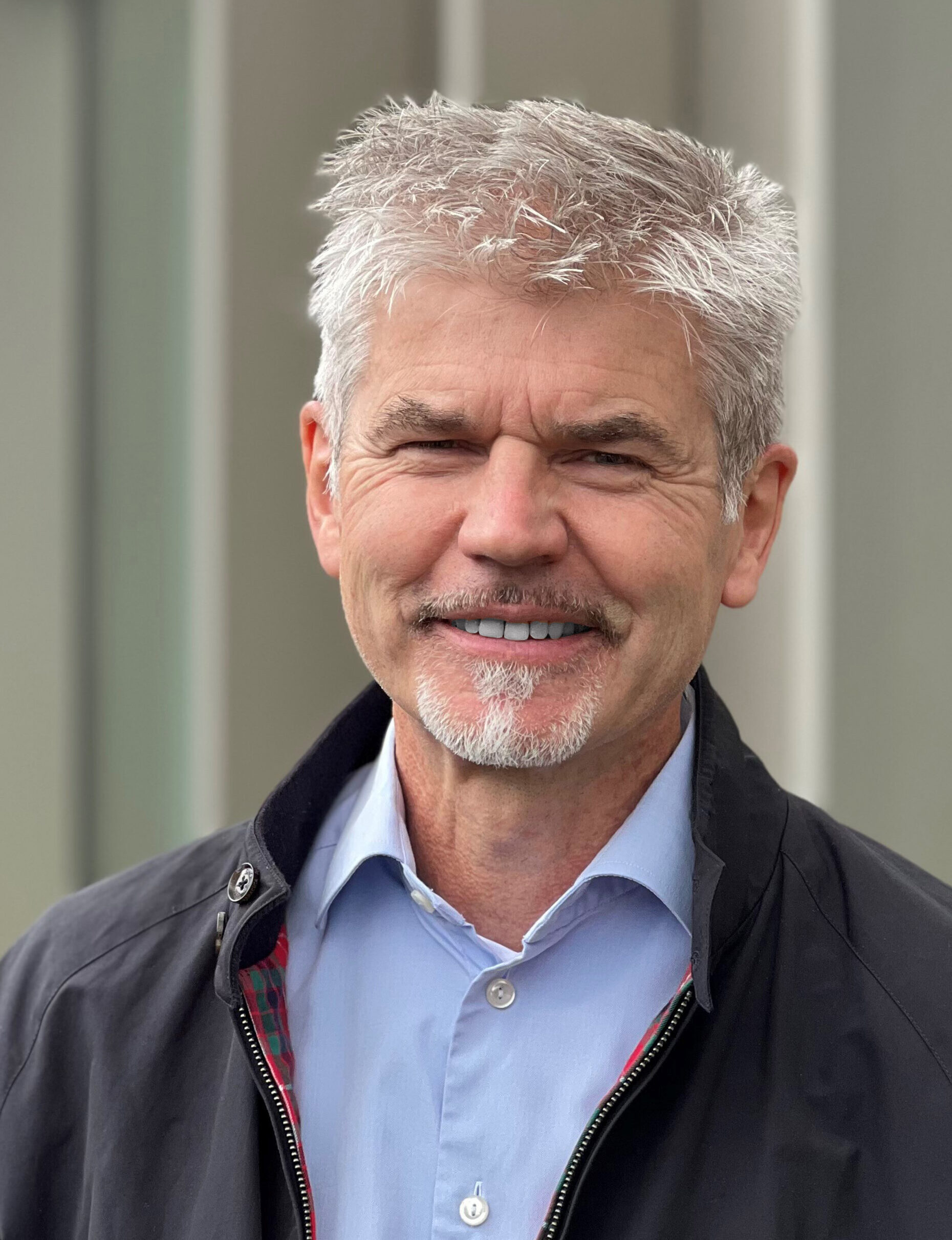Childcare – Materials Day 2025
For all members of the department who would like to participate to the Materials Day on May 7 but would have to register their children additionally in the childcare, we offer to cover up to 100% of the additional costs. For further information, please contact Claudia Sigel.
Program
Note: The symposium will be recorded.
Time |
Talks |
Title |
| 08:00 – 08:45 | Registration | Please note: Participation is free of charge but registration is required. |
| Morning session | ||
| 08:50 – 09:00 | Opening – Prof. Dr. Jörg Löffler | |
| 09:00 – 09:30 | Prof. Dr. Sarbajit Banerjee Paul Scherrer Institute and ETH Zurich, Switzerland |
Designing and architecting battery electrode materials across length scales |
| 09:30 – 10:00 | Prof. Dr. Oliver Gutfleisch Technical University of Darmstadt, Germany |
The role of magnetic materials in the energy transition |
| 10:00 – 10:30 | Prof. Dr. Maitane Berecibar Vrije Universiteit Brussel, Belgium |
… |
| 10:30 – 11:00 | Coffee Break and Poster Session |
|
| 11:00 – 11:30 | Prof. Dr. Emiliano Cortés Ludwig-Maximilians-Universität Munich, Germany |
Nanomaterials for energy and environment |
| 11:30 – 12:00 | Prof. Dr. Maria Lukatskaya ETH Zurich, Switzerland |
Engineering local chemical environments in electrolytes for efficient batteries |
| 12:00 – 13:30 | Lunch | |
| Afternoon session | ||
| 13:30 – 14:00 | Prof. Dr. Marina Freitag Newcastle University, United Kingdom |
From molecular programming to functional devices |
| 14:00 – 14:30 | Prof. Dr. Harry Atwater California Institute of Technology, USA |
… |
| 14:30 – 15:00 | Dr. Christine Gabardo CERT Systems Inc. Toronto, Canada |
Scaling materials for the electrochemical CO2 reduction reaction |
| 15:00 – 15:30 | Coffee Break and Poster Session |
|
| 15:30 – 16:15 | Young Investigator Lecture |
… |
| 16:15 – 16:30 | Award Ceremony Presented by … |
|
| 16:30 – 17:20 | Staudinger Durrer Lecture Prof. Dr. Lennart Bergström Stockholm University, Sweden |
Colloids at work |
| 17:20 – 17:30 | Closing Remarks – Prof. Dr. Jörg Löffler | |
| 17:30 | Apéro |
Speakers and Abstracts

Prof. Sarbajit Banerjee
Paul Scherrer Institute, Head of Laboratory for Battery Science
ETH Zurich, Chemistry and Applied Biosciences (D-CHAB)
09:00 – 09:30
Designing and architecting battery electrode materials across length scales
The design and operation of rechargeable batteries is predicated on orchestrating flows of mass, charge, and energy across multiple interfaces. Understanding such flows requires knowledge of atomistic and mesoscale diffusion pathways and the coupling of ion transport with electron conduction. Using multiple polymorphs of V2O5 as model systems, I will discuss our efforts to develop an Ångstrom-level view of ion diffusion pathways. Topochemical single-crystal-to-single-crystal transformations provide an atomistic perspective of how diffusion pathways are altered by modification of V—O connectivity, pre-intercalation, and high degrees of lithiation. Recently devised multi-step synthetic schemes enable the positioning of Li-ions across four distinct interstitial sites of a V2O5 insertion host and allow for deterministic redirection of Li-ion flows through site-selective modification.
At higher length scales, scanning transmission X-ray microscopy and ptychography imaging provide a means of mapping the accumulative results of atomic scale inhomogeneities at mesoscale dimensions and further enable tracing of stress gradients across individual particles. I will discuss strategies for the mitigation of diffusion impediments and degradation mechanisms based on controlling the coupling of chemistry, geometry, and mechanics. Some of these strategies include (a) utilization of Riemannian manifolds as a geometric design principle for electrode architectures; (b) atomistic design of polymorphs with well-defined diffusion pathways that provide frustrated coordination; and (c) site-selective modification as a means of tuning lattice incommensurability between lithiated and unlithiated phases.
Prof. Oliver Gutfleisch
Technical University of Darmstadt, Head of Functional Materials
09:30 – 10:00
The role of magnetic materials in the energy transition
Magnets are key enablers for the green energy transition. High performance hard and soft magnets are crucial components of energy-related technologies, such as direct drive wind turbines and e-mobility. They are also important in robotics and automatization, sensors, actuators, and information technology. The magnetocaloric effect (MCE) is the key for new and disruptive solid state-based refrigeration. The rare earth elements (REEs), an important class of the critical raw materials (CRMs), are essential constituents of the highest performing magnets and are highlighted in the raw and advanced materials flow essential for (EU) Industrial Ecosystems and a net zero emission scenario.
Important questions arise around the different mitigation scenarios addressing the criticality of REEs; they are classified as strategic elements and there are many bottlenecks along the supply and value chain. Supply deficits will endanger the development of technologies which abate the climate change and will also impact on other strategic sectors. This supply chain has to be secure, affordable and sustainable and in order to achieve this, we need the diversification of primary CRMs, material science and process solutions for new efficient alloy and microstructure design, substitutional materials and effective short and long loop recycling routes.
[1] O. Gutfleisch, M. A. Willard, E. Brück, C. H. Chen, S. G. Sankar, and J. P. Liu, Magnetic materials and devices for the 21st century: stronger, lighter, and more energy efficient. Adv. Mater. 23 (2011) 82.
[2] K.P. Skokov and O. Gutfleisch, Heavy rare earth free, free rare earth and rare earth free magnets – vision and reality, Scripta Materialia View Point Set, 154 (2018) 289-294.
[3] T. Gottschall, K.P. Skokov, M. Fries, A. Taubel, I. Radulov, F. Scheibel, D. Benke, S. Riegg, O. Gutfleisch, Making a cool choice: the materials library of magnetic refrigeration, Progress Report in Advanced Energy Materials 9 no. 34 (2019) 1901322.
[4] O. Gutfleisch, T. Gottschall, M. Fries, D. Benke, I. Radulov, K. P. Skokov, H. Wende, M. Gruner, M. Acet, P. Entel and M. Farle, Mastering hysteresis in magnetocaloric materials, Phil. Trans. R. Soc. A 374 (2016) 20150308.
[5] L. Han, Z. Rao, I.R. Souza Filho, F. Maccari, Y. Wei, G. Wu, A. Ahmadian, X. Zhou, O. Gutfleisch, D. Ponge, D. Raabe, Z. Li, Ultrastrong and ductile soft magnetic high-entropy alloys via coherent ordered nanoprecipitates, Advanced Materials 2102139 (2021).
[6] Y. Yang, A. Walton, R. Sheridan, K. Güth, R. Gauß, O. Gutfleisch, M. Buchert, B.-M. Steenari, T. Van Gerven, P.T. Jones, K. Binnemans, REE recovery from end-of-life NdFeB permanent magnet scrap: a critical review, Journal of Sustainable Metallurgy 3 (2017) 122.


Prof. Maitane Berecibar
Vrije Universiteit Brussel, Head of Battery Innovation Centre
10:00 – 11:30
Title xxxxx
eoj jgo osejfoi jo osejfo jirg eo joeijf oej og oesjroi osejf oseofj osejfo jesj oisje
Prof. Emiliano Cortés
Ludwig-Maximilians-University, Academic Lead of the Nanomaterials for Energy Group
11:00-11:30
Nanomaterials for energy and environment
Nanomaterials are revolutionizing the way we harness solar energy for a cleaner future. These tiny, engineered materials can efficiently capture sunlight and convert it into fuels, such as hydrogen, through processes like photocatalysis. Additionally, nanomaterials can break down plastics and pollutants, helping to clean the environment while being powered by the sun. This cutting-edge technology paves the way for greener, more sustainable cities. By utilizing knowledge from materials science, energy, photonics, optics, catalysis, and water research, we can design new nanomaterials that harness multiple abilities and rely on the endless energy of the sun to perform their tasks, advancing our dreams of a sustainable world.


Prof. Maria Lukatskaya
ETH Zurich, Group Head of Electrochemical Energy Systems Laboratory
11:30 – 12:00
Engineering local chemical environments in electrolytes for efficient batteries
Electrolytes play a crucial role in energy storage devices, impacting their environmental footprint, safety, cost, and performance. This talk will cover two key areas of electrolyte research for improving batteries.
First, we will explore water-based batteries. Aqueous electrolytes, being non-flammable and less toxic, offer safer battery operation. However, their limited electrochemical stability window reduces energy density. To address this, highly concentrated “water-in-salt” (WIS) electrolytes have been developed, significantly expanding the stability window and enhancing the performance of Li-ion and Zn metal batteries for grid energy storage. Despite their advantages, WIS electrolytes have high viscosity and require large amounts of potentially toxic salts, which limits their usability. We will discuss how cation solvation, electrolyte structure, and hydrogen bonding influence the electrochemical properties and performance, particularly in Zn plating/stripping and electrolyte decomposition. Additionally, we will explore strategies for engineering relatively dilute electrolytes for efficient aqueous batteries.
Second, the talk will present a novel method for stabilizing interfaces in Li metal batteries (LiMBs). Conventional electrolytes result in low cycle life and safety issues due to “dead” lithium and dendrite formation. Prior research suggests that fluorine-rich interfacial layer chemistry is important for the stabilization of Li-metal anodes, which can be achieved when electrolytes with a high fraction of fluorinated solvents and/or salts are used. We propose an alternative approach using electrostatic attraction between positively charged readily reducible fluorinated cations and the negatively charged anode. This method enables the formation of a robust fluorine-rich interfacial layer with minimal additive (∼0.1 wt%), facilitating dense, conformal Li deposition. This strategy can offers a cost-effective, environmentally friendly solution for enhancing high-energy batteries.
Prof. Marina Freitag
Newcastle University, Chair of Energy
13:30 – 14:00
From molecular programming to functional devices
A paradigm shift in sustainable energy materials research is being realised through the exploitation of liquid-phase coordination pathways, which enable the programming of dimensionally adaptive materials that respond dynamically to evolving device architectures. In this approach, reversible metal–ligand interactions are modulated in solution to create coordination networks that can be reconfigured from one-dimensional chain-like assemblies through two-dimensional layered motifs to fully three-dimensional frameworks. These reconfigurable structures are designed to undergo low-temperature phase transitions, typically below 120 °C, allowing key electronic and structural attributes—such as bandages, redox potentials, and charge transport pathways—to be finely modified in real time [1,2].
The resulting materials have been shown to exhibit tuneable conductivity, self-healing capabilities, and robust performance under varying operating conditions, essential for next-generation applications [3]. In fully assembled prototypes, smart interfaces have been observed to optimise charge extraction when coupled with emerging Internet-of-Things and artificial intelligence control systems [4]. This indicates a feasible path toward high-performance autonomous or adaptive IoT devices driven by dimensionally adjustable materials. The bridging of molecular-scale design principles to macro-scale integration demonstrates how liquid-phase coordination pathways provide a powerful toolset to address the evolving needs of sustainable energy systems [5]. Through precise modification of metal-ligand bond strengths in the 40–120 kJ/mol regime, transition-metal coordination frameworks can achieve reversible solid-to-liquid transitions, permitting dynamic property tuning [6]. By unifying synthetic coordination chemistry and device engineering, these programmable materials are poised to drive new innovations in energy harvesting, storage, and signal processing technologies [7].
References
[1] Michaels, H.; Golomb, M. J.; Kim, B. J.; Edvinsson, T.; Cucinotta, F.; Waddell, P. G.; Probert, M. R.; Konezny, S. J.; Boschloo, G.; Walsh, A.; Freitag, M. Copper Coordination Polymers with Selective Hole Conductivity. J. Mater. Chem. A 2022, 10, 9582-9591.
[2] Benesperi, I.; Michaels, H.; Edvinsson, T.; Pavone, M.; Probert, M. R.; Waddell, P.; Muñoz-García, A. B.; Freitag, M. Dynamic Dimer Copper Coordination Redox Shuttles. Chem 2022, 8, 439-449.
[3] Spinelli, G.; Morritt, G. H.; Pavone, M.; Probert, M. R.; Waddell, P. G.; Edvinsson, T.; Muñoz-García, A. B.; Freitag, M. Conductivity in Thin Films of Transition Metal Coordination Complexes. ACS Appl. Energy Mater. 2023, 6, 2122-2127.
[4] Bennett, T. D.; Horike, S. Liquid, Glass and Amorphous Solid States of Coordination Polymers and Metal-Organic Frameworks. Nat. Rev. Mater. 2018, 3, 431-440.
[5] Freitag, M.; Teuscher, J.; Saygili, Y.; Zhang, X.; Giordano, F.; Liska, P.; Hua, J.; Zakeeruddin, S. M.; Moser, J.-E.; Grätzel, M.; Hagfeldt, A. Energy Materials for Efficient Power Generation Under Ambient Lighting. Nat. Photonics 2017, 11, 372-378.
[6] Michaels, H.; Rinderle, M.; Freitag, R.; Benesperi, I.; Edvinsson, T.; Socher, R.; Gagliardi, A.; Freitag, M. Energy Devices Under Ambient Light Powering Machine Learning: Toward Autonomous Smart Sensors for the Internet of Things. Chem. Sci. 2020, 11, 2895-2906.
[7] Zhu, H.; Shao, B.; Shen, Z.; You, S.; Yin, J.; Wehbe, N.; Wang, L.; Song, X.; Abulikemu, M.; Basaheeh, A.; Jamal, A.; Gereige, I.; Freitag, M.; Mohammed, O. F.; Zhu, K.; Bakr, O. M. In Situ Energetics Modulation Enables High-Efficiency and Stable Inverted Perovskite Solar Cells. Nat. Photonics 2025, 19 (1), 28–35.


Prof. Harry Atwater
Caltech, Head of Division of Engineering and Applied Science
14:00 – 14:30
Title xxxx
soeijroöj oöejr oeiu oejo ijoei iosh wo ojr orh wiehrowuro uwru oejrfois oiwjhr orj
Dr. Christine Gabardo
Co-Founder and Chief Technology Officer, CERT Systems Inc.
14:30 – 15:00
Scaling materials for the electrochemical CO2 reduction reaction
The electrochemical CO₂ reduction reaction (CO₂RR) offers a pathway for converting greenhouse gas emissions into value-added chemicals and fuels using renewable electricity. This process not only mitigates CO₂ emissions but also produces industrially critical compounds—such as carbon monoxide, ethanol, and notably, ethylene, a key precursor in plastics and textiles traditionally sourced from fossil fuels. In this presentation, we delve into the materials engineering challenges and innovations essential for scaling CO₂RR. Our discussion centers on the design and optimization of advanced electrolyzers, with a particular focus on the development of robust membrane electrode assemblies, catalyst formulations, and interface engineering. We detail Team CERT’s scale-up journey, showcased during the NRG COSIA Carbon XPRIZE, where we transitioned from laboratory-scale materials synthesis and catalyst optimization to a 100 kg/day pilot system. Key challenges related to process efficiency, durability, and selectivity are addressed through a strategic integration of materials science principles—ranging from microstructure control to reactive capture mechanisms. Our outlook emphasizes that advanced materials engineering is pivotal to overcoming current limitations and advancing the commercialization of CO₂RR for sustainable chemical production.


Prof. Lennart Bergström
Stockholm University, Head of Materials Chemistry
Department of Chemistry, and Wallenberg Initiative Materials Science for Sustainability
16:30 – 17:20
Colloids at work
This presentation will give an overview how colloids, assembled systems and interfacial engineering have been used to develop materials with useful properties and compositions that reduce or eliminate the use and generation of toxic, depleting, rare, and persistent substances. I will give examples from my work on ceramics and composites with a focus on recent studies on thermally insulating materials assembled from biobased and waste-based nanofibrils that could both significantly reduce the energy demand and carbon footprint in the building sector. Examples will be given how textile waste are upcycled into nanofibrils that can be colloidally processed into light-weight foams. I also will describe our current efforts to probe the moisture-dependent phonon transport in cellulose using inelastic neutron scattering.
I will also give an overview of recent research on how assembly of colloidal nanoparticles with a well-defined shape and size can provide insight into non-classical crystallization pathways and the rich structural diversity and dynamics of assembling colloids. The assembly of truncated iron oxide nanocubes have been followed by time-resolved small-angle X-ray scattering (t-SAXS) in levitating droplets. I will discuss how the particle concentration, surfactant concentration, solvation, and the application of weak magnetic fields can control the morphology and the transformation from a disordered colloid to well-ordered mesocrystals.
Finally, I intend to give some personal reflections on the complexity, insights, challenges, and cognitive dissonance related to teaching and leading a master’s program in Sustainable chemistry, and leading and conducting research in chemistry and materials science for sustainability.
References:
- L. Hultman et al., “Advanced materials provide solutions towards a sustainable world” (Correspondence), Nature Materials, 23, 160 (2024)
- I. Usov, G. Nyström, J. Adamcik, S. Handschin, C. Schütz, A. Fall, L. Bergström, R. Mezzenga, ”Understanding nanocellulose chirality and structure-properties relationships at the single fibril level”, Nature Comm., 6, 7564 (2015).
- A. Di, C. Schiele, S. E. Hadi, L. Bergström, ”Thermally insulating and moisture-resilient foams based on upcycled aramid nanofibres and nanocellulose”, Adv. Mater., 35, 2305195 (2023).
- V. Apostolopoulou-Kalkavoura, et al., “Humidity-Dependent Thermal Boundary Conductance Controls Heat Transport of Super-Insulating Nanofibrillar Foam” Matter, 4, 1, 276 (2021)
- A. Åhl, E. Nocerino, U. T. Veettil, K. Uetani, S. Yu, J. Armstrong, F. Juranyi, L. Bergström, “Moisture-dependent vibrational dynamics and phonon transport in nanocellulose materials”, Adv. Mater., 2415725, (2024)
- Z-P Lv, M. Kapuscinski, L. Bergström, “Tunable assembly of truncated nanocubes by evaporation-driven poor-solvent enrichment”, Nature Comm., 10, 4228 (2019)
- M. Kapuscinski, P. Munier, M. Segad, L. Bergström, “Two-Stage Assembly of Mesocrystal Fibres with Tunable Diameters in Weak Magnetic Fields”, Nano Lett., 20, 10, 7359 (2020)
